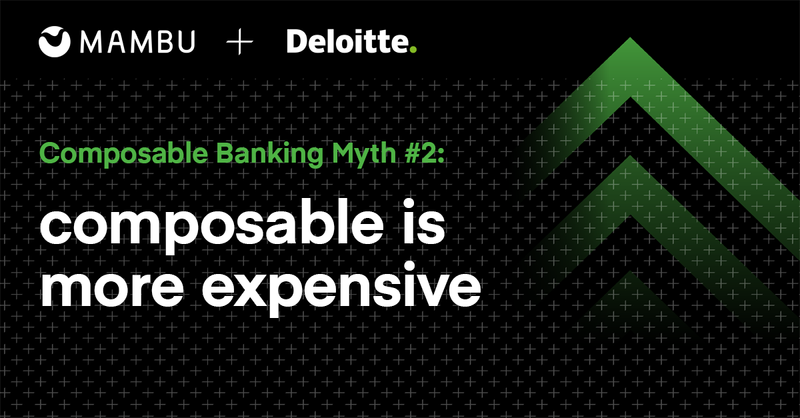This is an edited transcript of the conversation which you can watch on demand.
What are the prerequisites for composability?
Kunal Galav: Great question Susan. Really simply, at first there needs to be the appetite to have modern technology infrastructure in your bank. This is going to be driven by the desire for a solution which offers a fast time to market, low cost, well managed risk, brilliant customer experience and high scalability.
Miguel Amaro: From a business perspective, it’s about agility. Those who choose to adopt composable banking want to achieve something specific – such as launching products to market faster. Composable banking is an enabler for agility: without all the complexities of developing customised solutions.
Kunal Galav: I agree, agility is key. If you read investor profiles to get a sense of what banks are trying to achieve, across the board it's all about agility to keep up with the pace of change. Composability is an enabler.
How does composable compare to open banking and Business Process as a Service (BPaaS) offerings?
Kunal Galav: If you think about the open banking Business Process as a Service (BPaaS) offering, their success is dependent on flexible architectures, quick time to market, and the ability for banks to configure easily and then reconfigure as many times as needed. Composable banking platforms like Mambu are a key enabler to making this happen.
Miguel Amaro: The introduction of the second Payment Services Directive (PSD2), the European regulation for electronic payment services and payment service providers for the European Union, boosted innovation and helped banks adapt to new technological developments. It promoted a mindset change by opening the bank up to outside opportunities to execute certain capabilities – so once again, composable is an enabler.
Kunal Galav: There are two ways to look at any regulatory activity. Either it's a big compliance cost or it's an innovation opportunity. Composable makes it an innovation opportunity. That's the bottom line.
What recommendations and best practices should we use to migrate to a composable architecture from a monolithic architecture?
Miguel Amaro: There are three key best practices to help migrate your solution from a monolithic architecture to a composable solution.
Firstly, you should start by designing a detailed capability map which covers different solutions and helps to identify which are the best ones to apply. Some of these could cover more than one, others will just cover one capability.
Then, you need to design your integration layer to help you select the best options for that integration layer, which Mambu often refers to as the process orchestration tool, which acts as the middle layer between different business systems.
Finally, you need to establish a very strong governance model. You need to lay down the rule that the products that you will licence to implement will be used with a perspective of adopting and not adapting these products, making use of the out-of-the-box solution.
By adopting these baseline design principles and configuring the solutions, respecting what they have to offer and making use of their capabilities, you’ll de-risk the project, reduce future tech debt and do a great job.
What are the functional components / architecture of a composable bank?
Kunal Galav: I may be oversimplifying it here and it does in some instances depend on the user case, but at a basic level, you’ll need:
- A front end so customers can engage with the bank
- Regulatory reporting
- Know Your Customer (KYC)
- Sanctions
- Financial crime engine
- Customer relationship management
- A calculation engine
- Payment integration
These are the major building blocks, but it does depend on the use case. For example, for mortgages you’re likely to need a collateral management component – but it’s not the case for unsecured lending.
What is the time to market average for a composable banking set up?
Miguel Amaro: It really depends on whether you are implementing a new greenfield bank and then it depends on the number of products, level of complexity, number of integrations and whether migration is needed. All of these will dictate the speed to market but it is possible to go-live within 12 months.
This is an edited transcript of the Composable Banking FAQs webinar with Deloitte and Mambu, where we dispel some of the myths around composable banking and answer the most frequently asked questions. Click here to watch the full webinar on demand.





